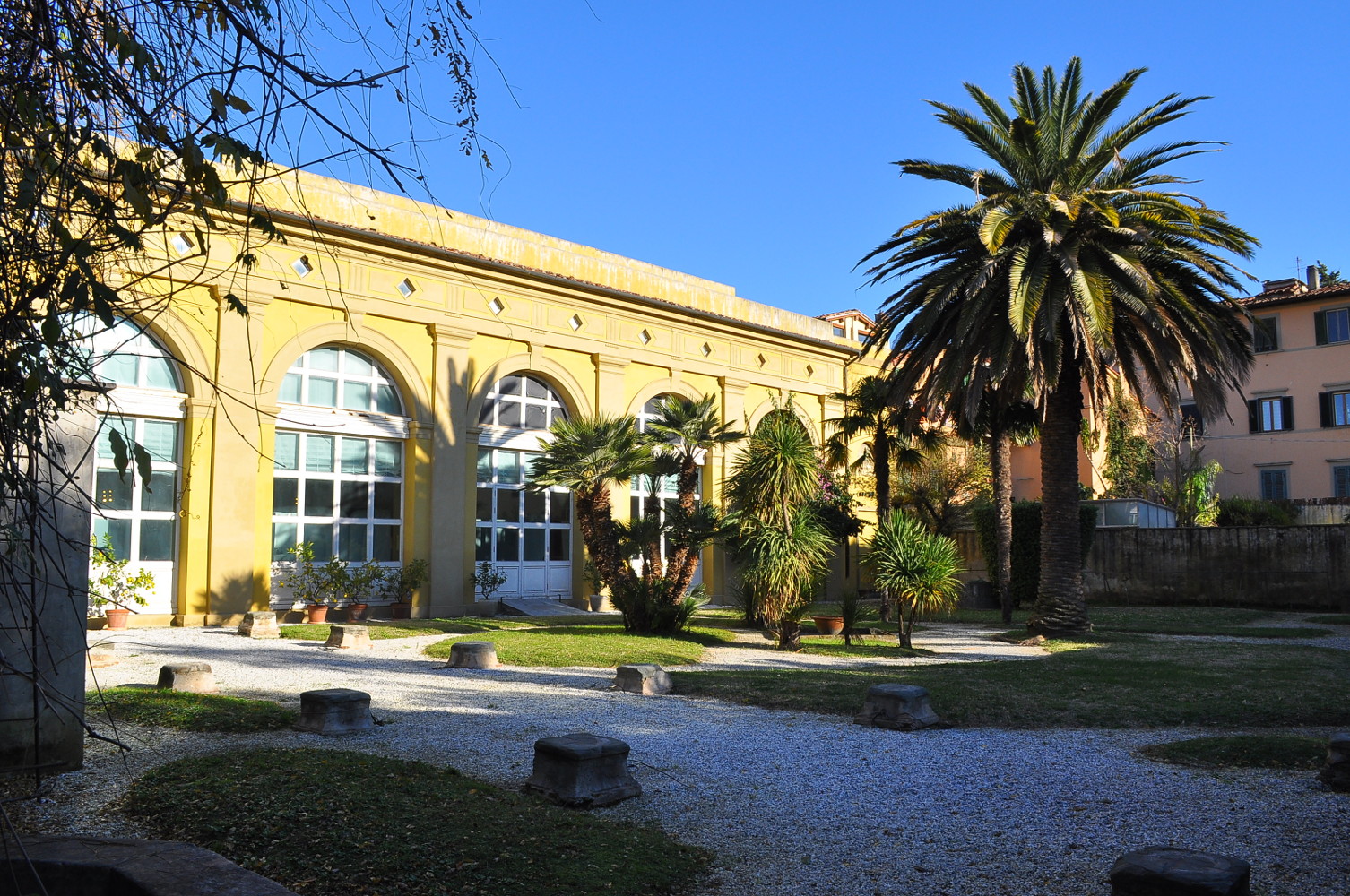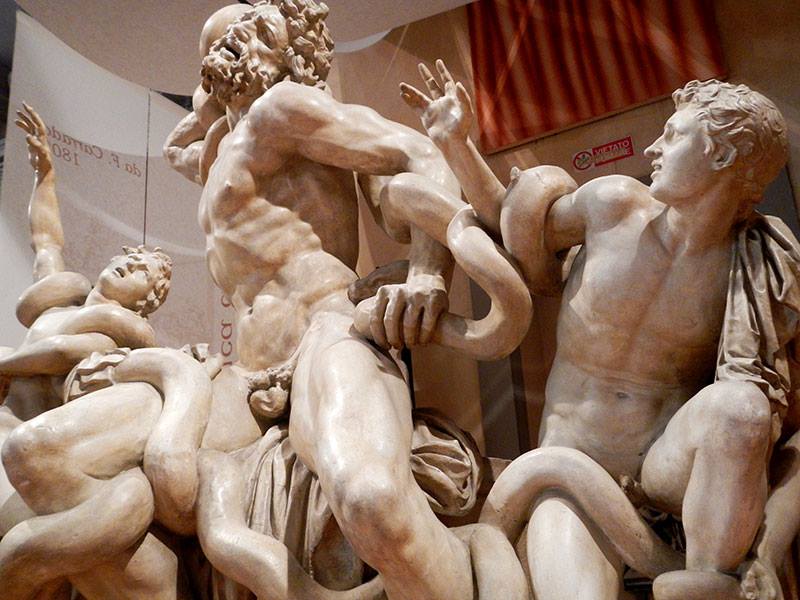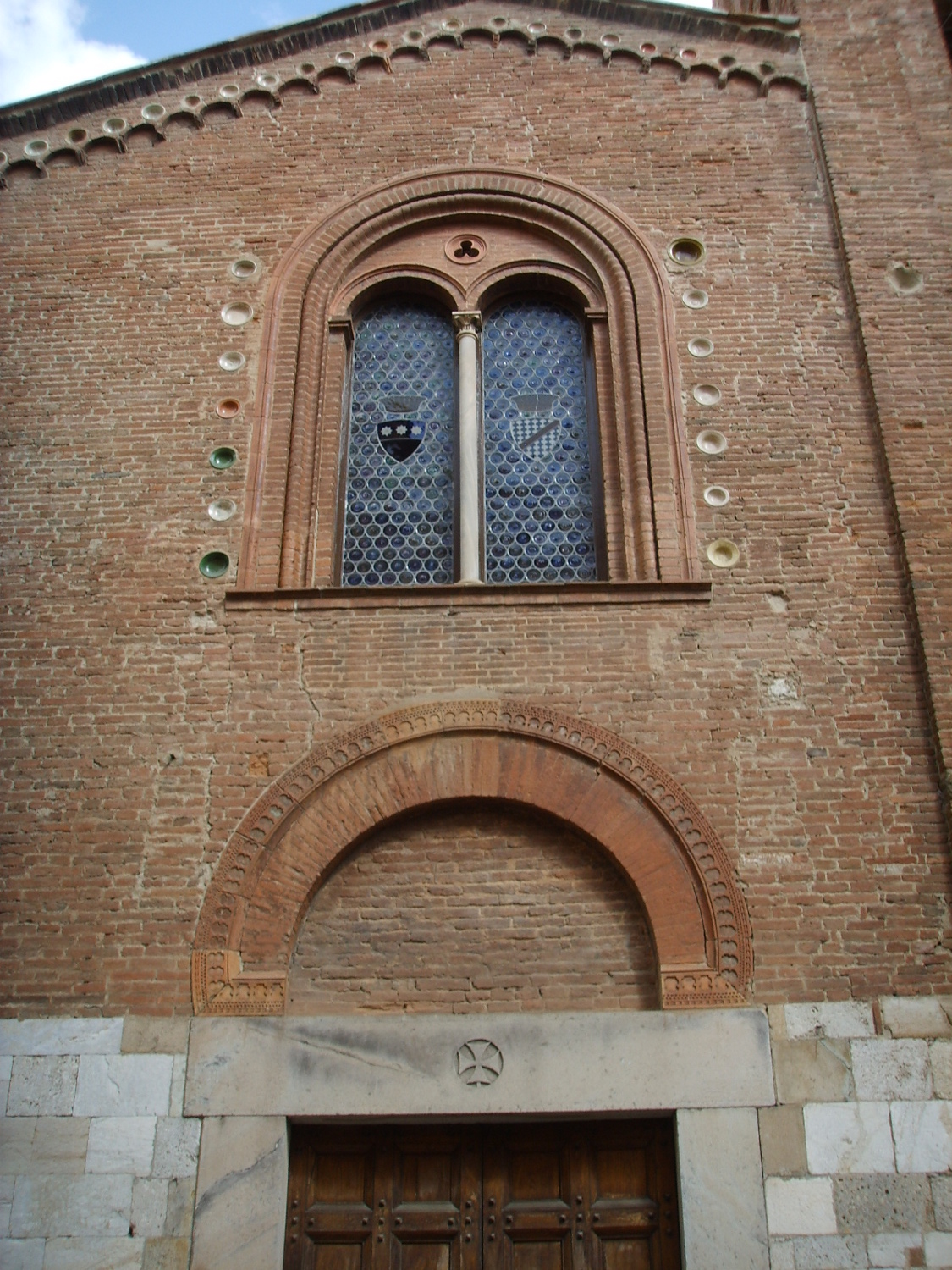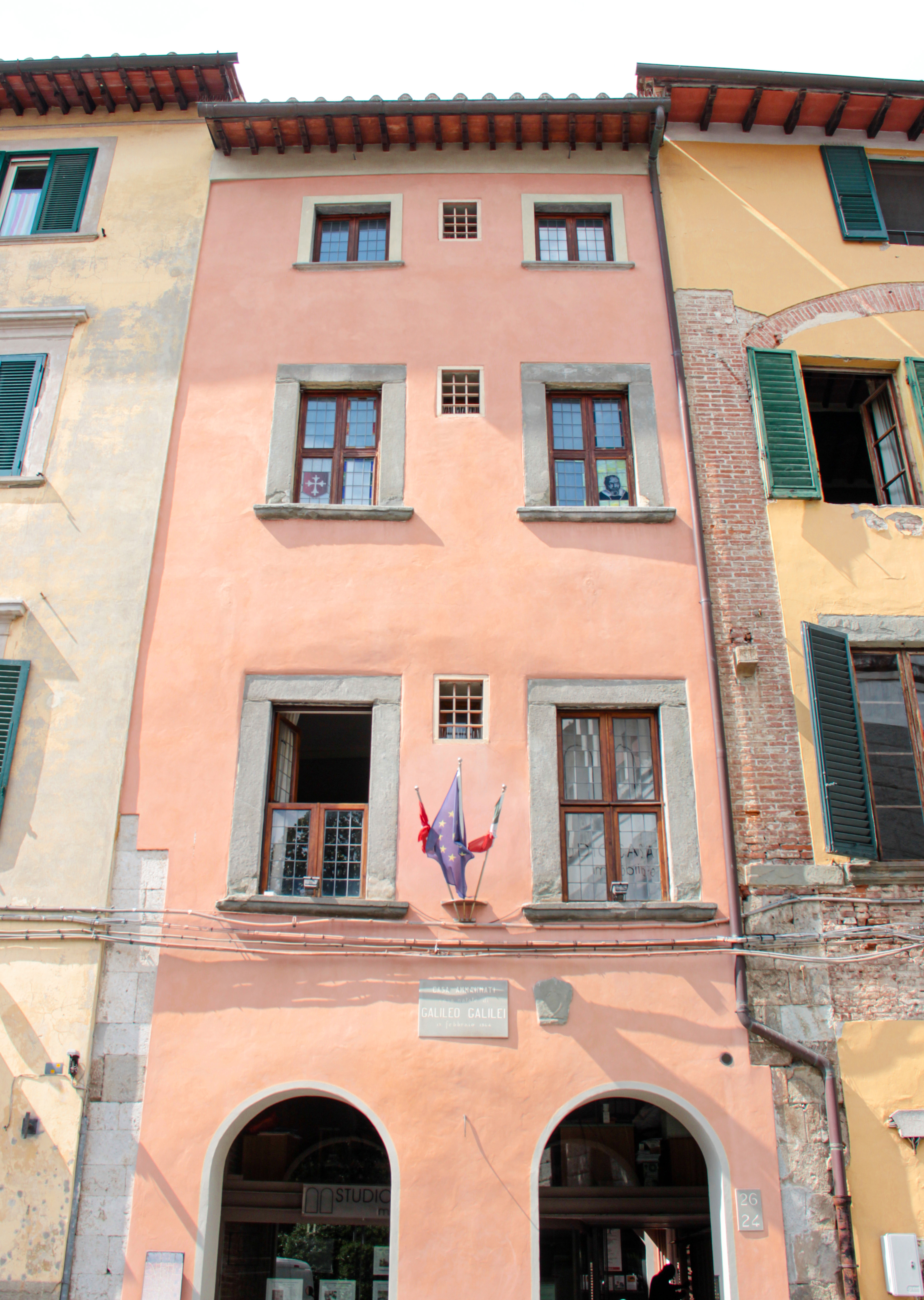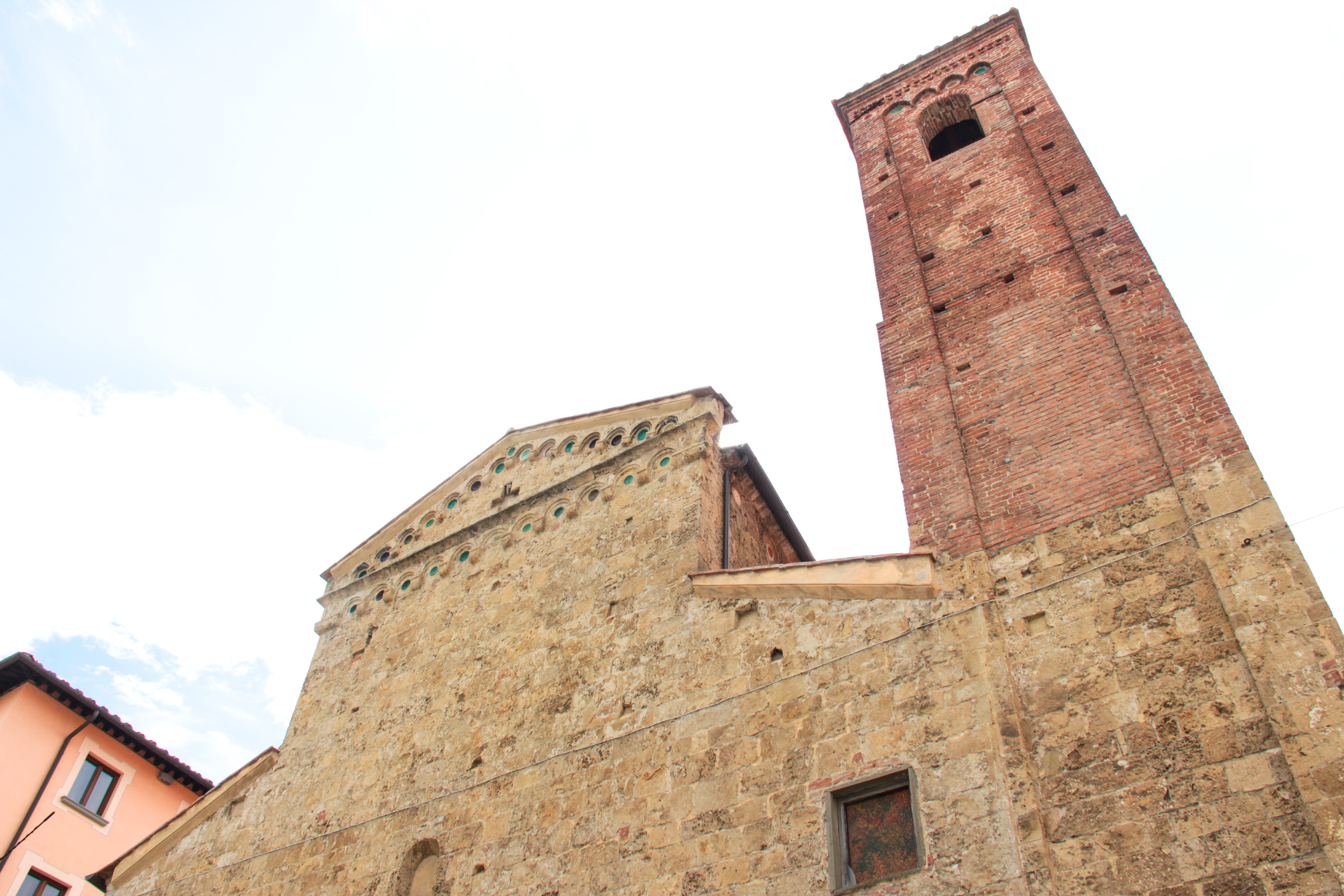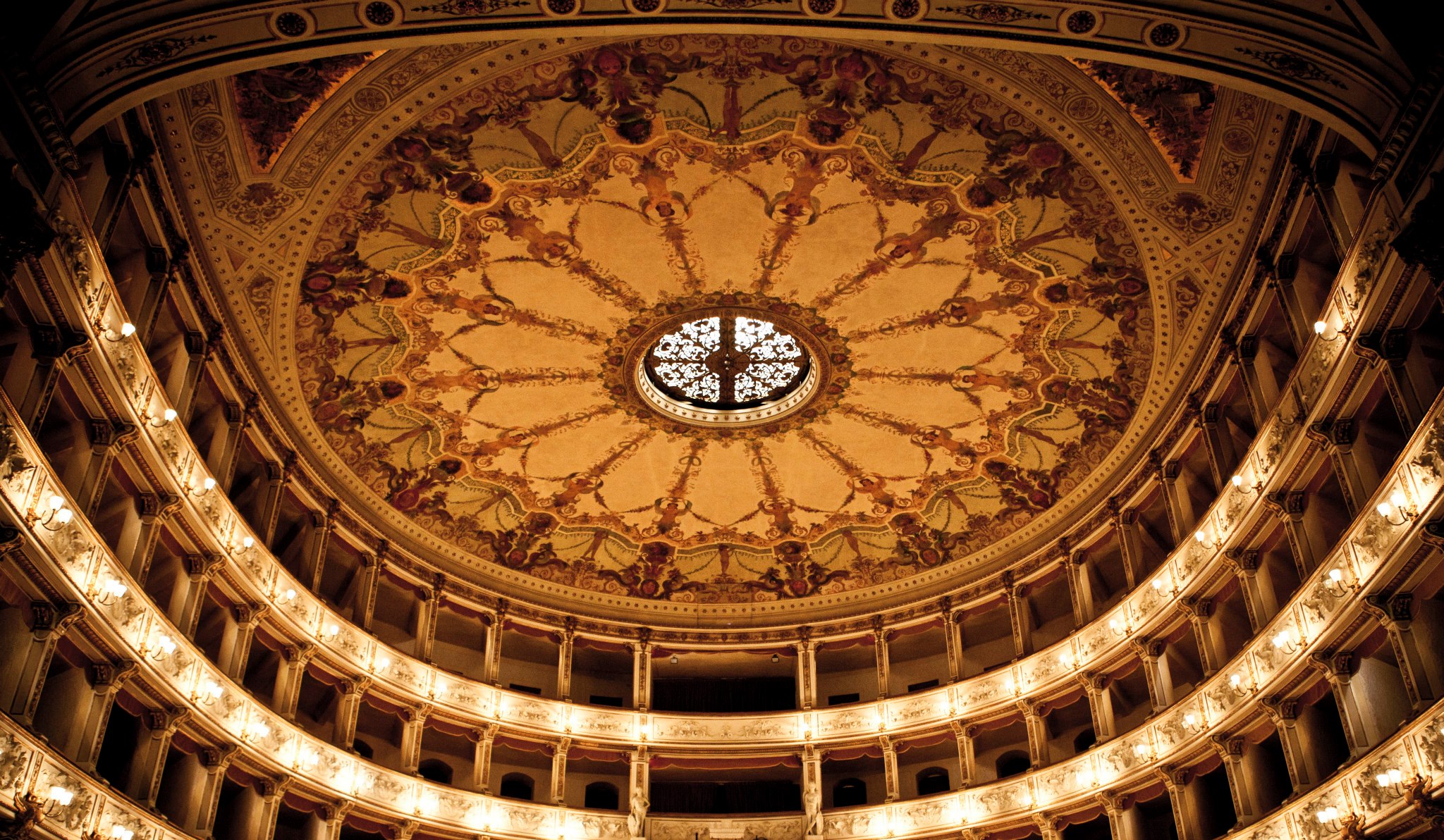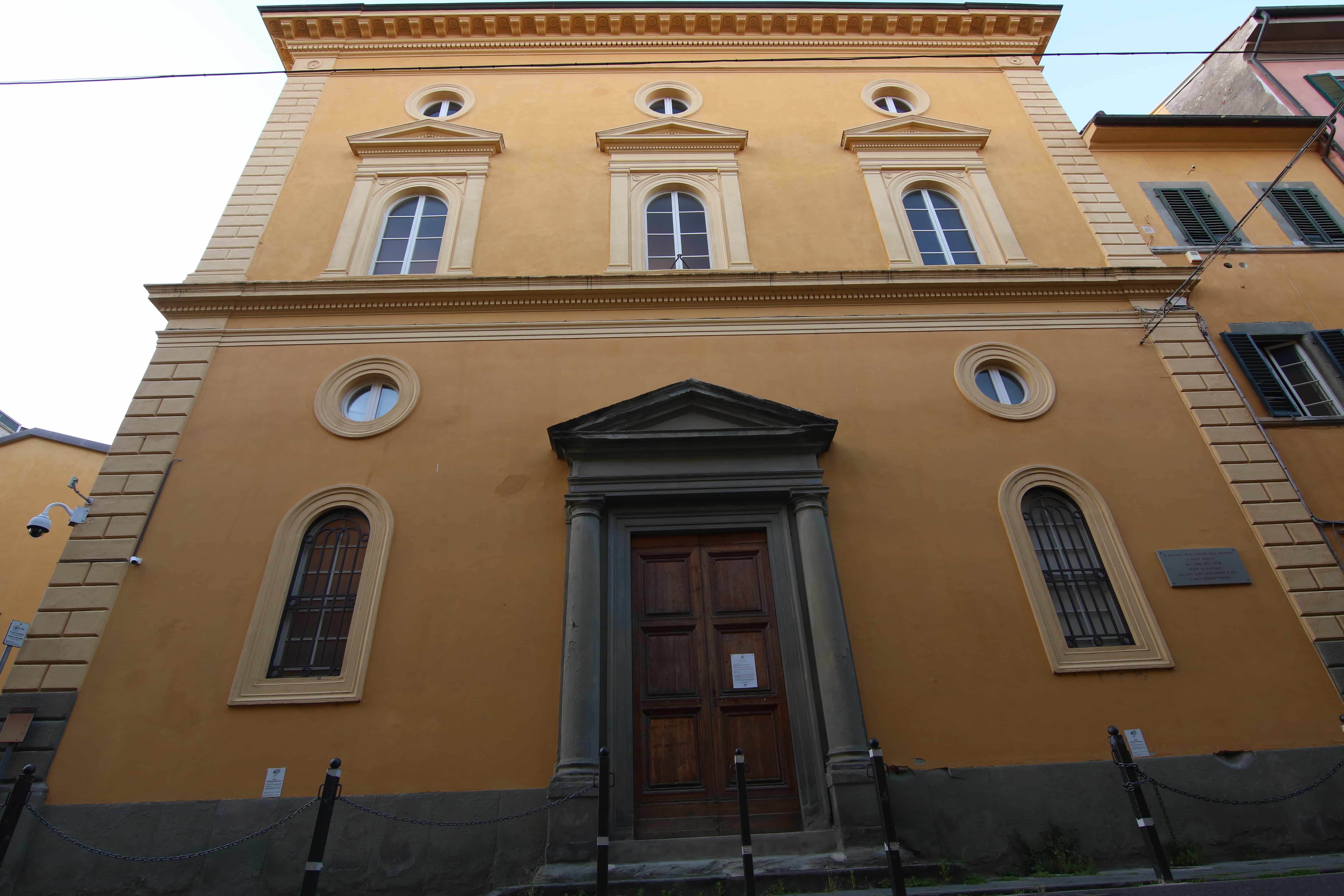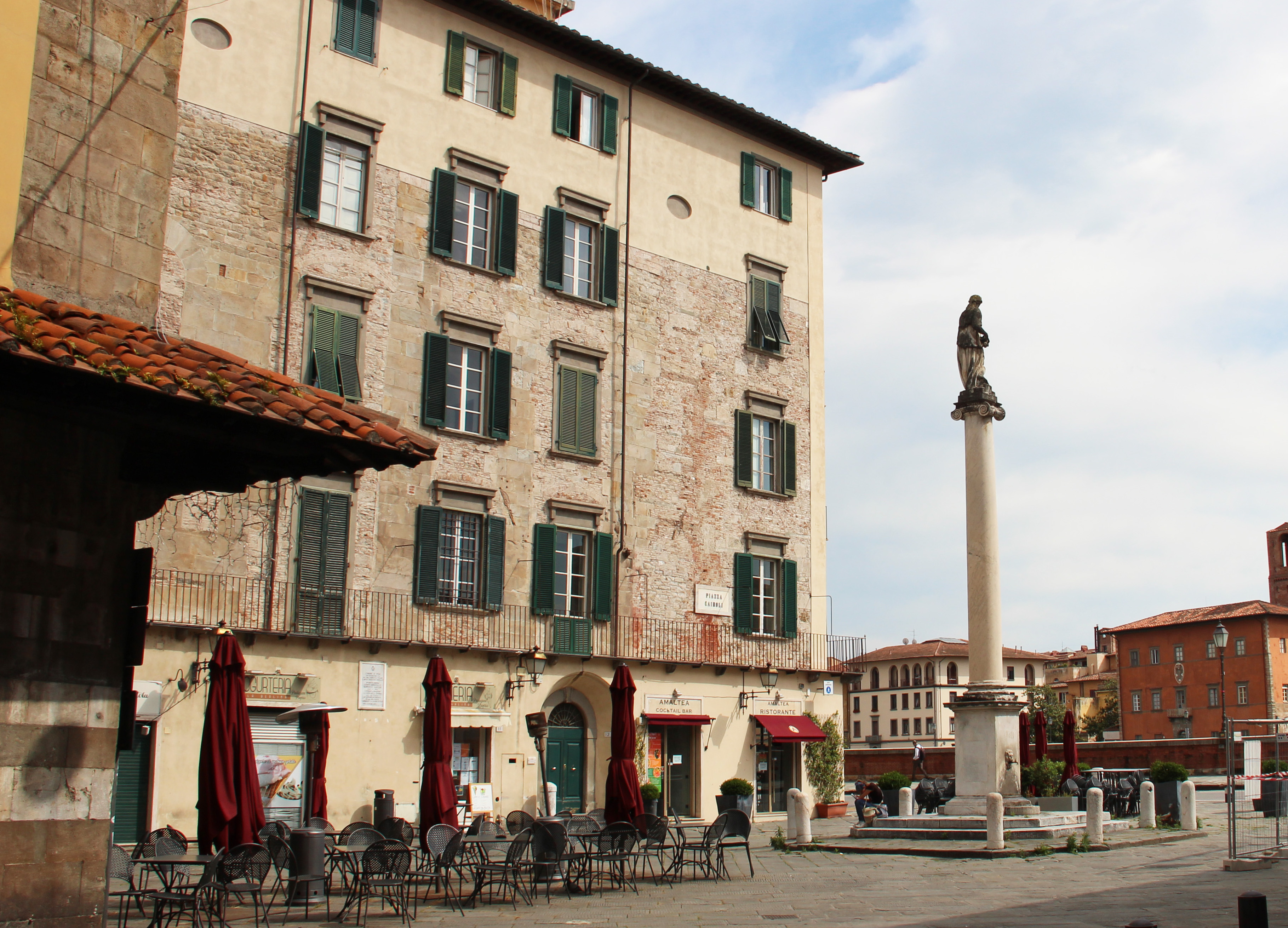Chiesa e chiostro di San Francesco

The earliest mention of a church dedicated to St. Francis is in 1233. The Pisan community of Lesser Friars expanded rapidly, aided by support from the city and private donations. The Church became an important meeting place for the public, the seat of a studium, with a library and a scriptorium.
In 1261, in recognition of the important role of the friar preachers, Archbishop Visconti inaugurated the extension to the Church under the guidance of Giovanni di Simone. The belfry, daringly supported by a flying arch, is particularly interesting. Financial problems, connected to wars at the end of the 13th century, put a halt to building. That the Church was still incomplete in the early 1300s is plainly evident from the front, begun in marble donated by the Gualandi family but only completed under the Medicis. In later centuries the church and monastery were renovated several times: two new cloisters and the S. Bernardino chapel were added in the 15th century. Between the 16th and 17th centuries the counter reformation altars were erected and the windows in the nave put in, both of which operations damaged the 14th century frescoes.
Most of the church furniture was dispersed on suppression of monasteries under the Lorraine rulers and Napoleon. The altar screen depicting Stories from the Life of St. Francis, attributed to Giunta Pisano, is now in the S. Matteo Museum, whereas Cimabue’s famous Christ in Majesty and the Stigmata by Giotto went to the Louvre. On the altar is a carved marble altarpiece by Tommaso Pisano of The Madonna and Child with Saints. The remains of what were once great 14th century frescoed cycles survive in the main chapel and in the transept chapels. East of the sacristy is the Sardi-Campiglia chapel, decorated with frescoes by Taddeo di Bartolo (1397) and a cycle painted by Niccolò di Pietro Gerini (1392) can be admired in the Chapterhouse.

